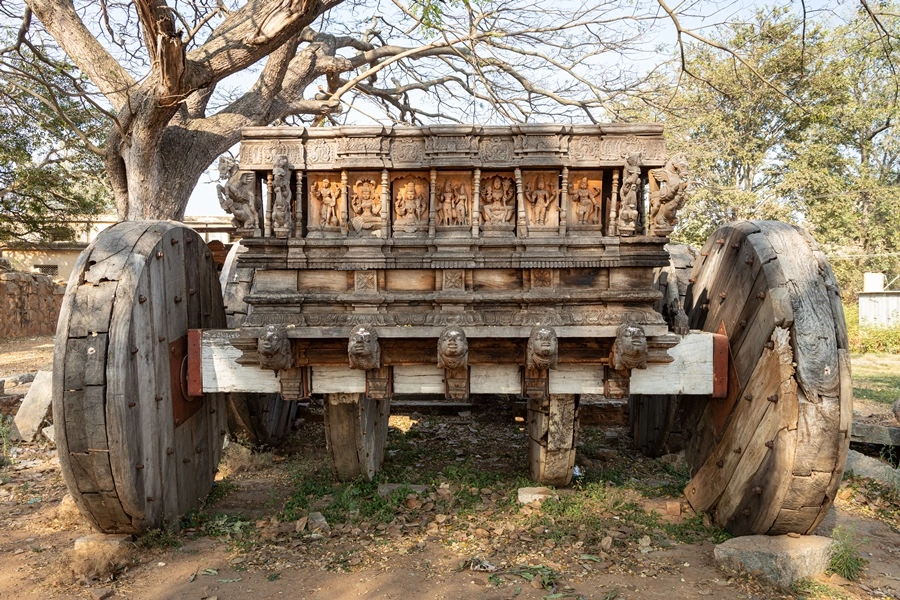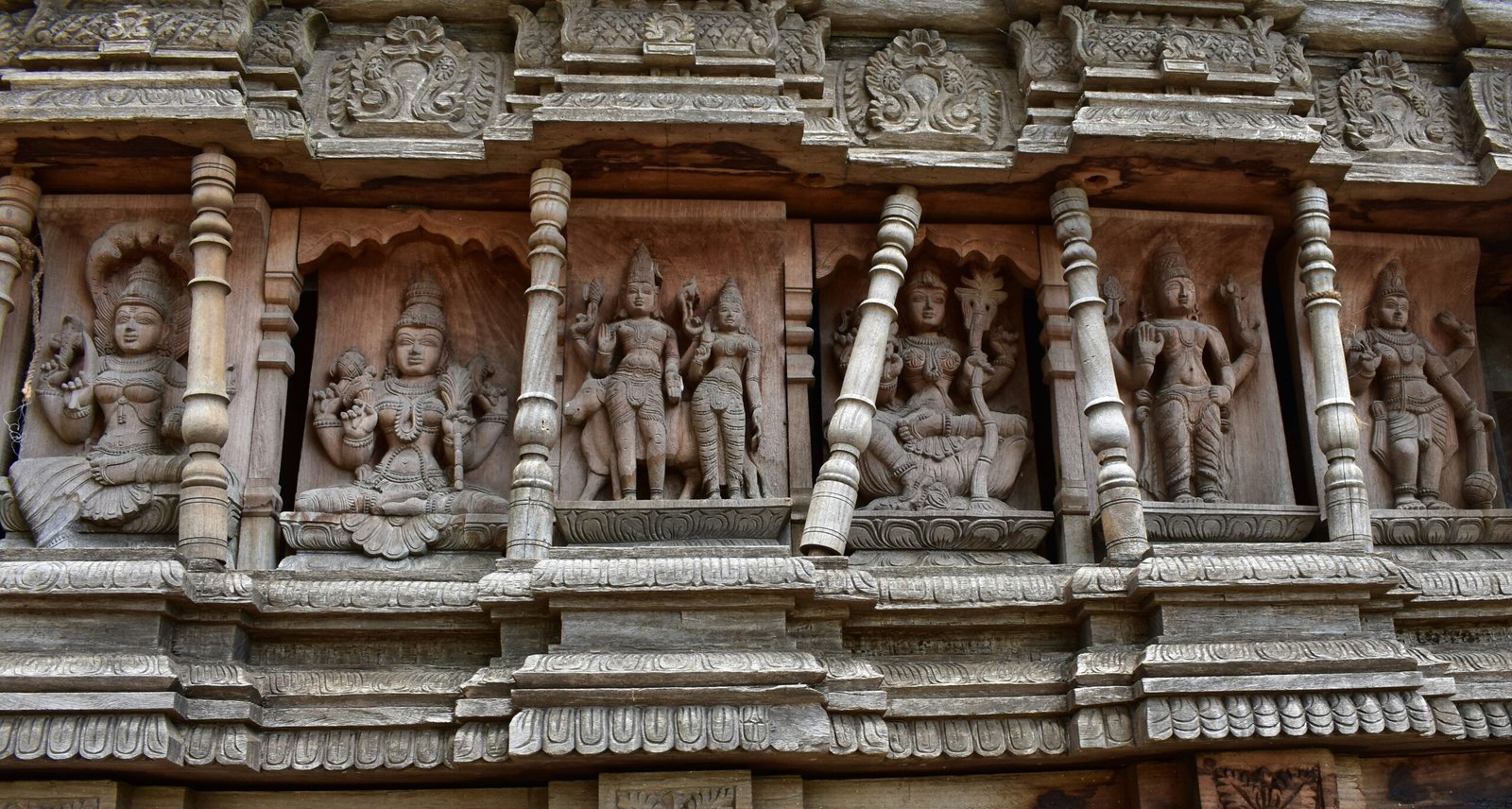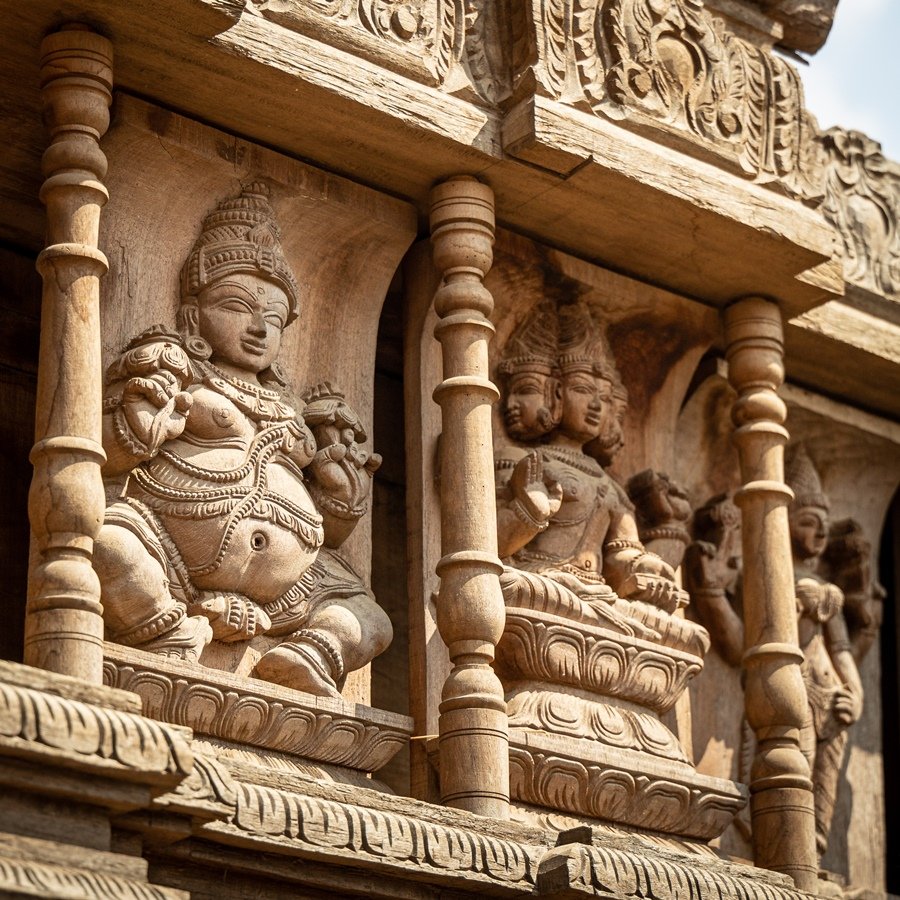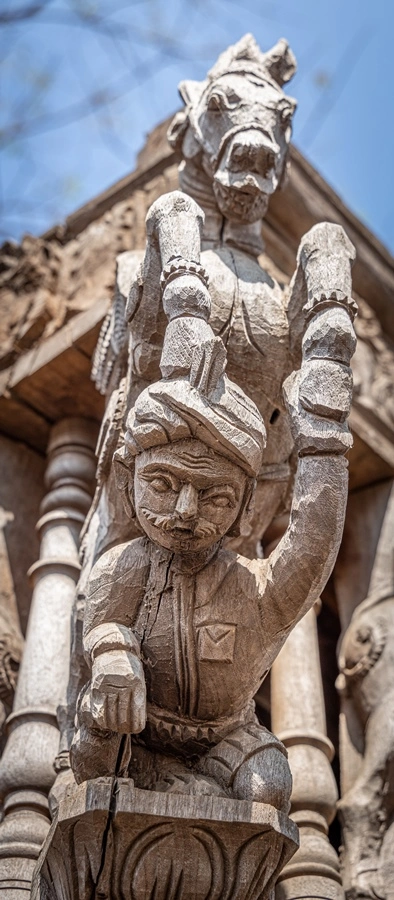Introduction to Bhoga Nandeeshwara Temple
Located at the foothills of the majestic Nandi Hills in Karnataka, the Bhoga Nandeeshwara Temple holds a significant position in South Indian culture and religious practices. This ancient temple, dedicated to Lord Shiva, is not only a sacred place of worship but also an architectural marvel, attracting devotees and history enthusiasts alike.
The Bhoga Nandeeshwara Temple dates back to the early 9th century, placing it among the oldest temples in Karnataka. It has undergone several renovations and expansions under various dynasties, including the Ganga, Chola, Hoysala, and Vijayanagara rulers. Each of these dynastic periods has left an indelible mark on the temple’s architecture, resulting in a complex yet harmonious blend of different architectural styles.
The temple is celebrated for its exquisite Dravidian architecture, characterized by intricately carved pillars, grand gopurams (gateway towers), and expansive courtyards. The Bhoga Nandeeshwara Temple complex comprises three main shrines: Bhoga Nandeeshwara (representing Lord Shiva in his youthful form), Uma Maheshwara (symbolizing his marital bliss with Goddess Parvati), and Arunachaleswara (depicting Shiva in the form of a hermit). This trifecta of shrines enhances the temple’s spiritual significance, depicting different stages of Lord Shiva’s life.
The temple is not just an architectural treasure but also a vital part of the socio-cultural fabric of South India. It serves as a hub for numerous religious festivities, traditional dance, and music performances. Devotees throng the temple during auspicious occasions like Maha Shivaratri and Kartika Masam, emphasizing its enduring importance.
The Wooden Chariot of Bhoga Nandeeshwara Temple stands as a testament to the meticulous craftsmanship and artistic ingenuity of its time. This magnificent chariot is a significant part of the temple’s rituals and festivities, drawing attention to the artisans’ unparalleled skills in woodwork. The chariot and the temple together encapsulate the profound spiritual and cultural heritage of Karnataka.



Historical Significance of the Wooden Chariot
The wooden chariot of Bhoga Nandeeshwara Temple, located in Karnataka, stands as a testament to timeless craftsmanship and religious significance. This awe-inspiring artifact dates back to the early 9th century, aligning with the Chola dynasty’s rule, a period known for its patronage of arts and architecture. The chariot, a quintessential part of the temple heritage, was meticulously carved by skilled artisans whose names often remain lost to history, yet their legacy endures through this remarkable structure.
Constructed using traditional methods, the wooden chariot is an embodiment of devotion and artistry. Its creation required the deft hands of artisans skilled in woodwork, metal fittings, and intricate carvings, ensuring that each element reflected the sacred narratives it was intended to portray. Historical records suggest that such chariots were integral to the temple’s grand festivals and processions, particularly during the Mahashivratri celebrations, where they symbolized divine presence and movement. The chariot would be paraded with deities’ idols, accompanied by devotees singing hymns and offering prayers, making it a pivotal element in ritualistic worship.
Numerous legends and folklore surround the chariot, further enriching its cultural significance. One popular tale speaks of a divine intervention during its construction. It is said that when the artisans faced challenges, Lord Nandi himself appeared in their dreams, guiding them to complete the chariot with divine precision. Such anecdotes, passed down through generations, underscore the deep spiritual connection and reverence associated with the wooden chariot of Bhoga Nandeeshwara Temple.
The wooden chariot thus holds an esteemed place not only in the temple’s history but also in the collective memory of the local community. It serves as a poignant reminder of the intersection between artistry and spirituality, encapsulating the essence of Karnataka’s rich cultural heritage.
The wooden chariot of the Bhoga Nandeeshwara Temple in Karnataka stands as an epitome of intricate craftsmanship and exemplary design. Crafting such a magnificent structure involves the use of select high-quality wood. Renowned for its durability and resistance to weathering, teakwood is predominantly employed in constructing the chariot. This choice of material ensures not only the chariot’s longevity but also provides a sturdy canvas for elaborate carvings and engravings.

The woodworking techniques utilized in the making of the wooden chariot are deeply rooted in traditional practices passed down through generations. Skilled artisans meticulously carve and assemble the various components of the chariot using methods such as jointing, inlay work, and relief carving. Each piece is joined together with precision, employing traditional joinery techniques that do not rely on nails, ensuring both the strength and the aesthetic purity of the chariot.
What sets the wooden chariot of Bhoga Nandeeshwara Temple apart are the numerous detailed carvings and engravings that adorn its structure. The chariot features a plethora of sculptural elements that reflect religious themes, mythological stories, and symbolic motifs. Notable among these is the depiction of deities and divine beings intricately carved on the pedestal and the pillars. These figures are portrayed with such finesse that they seem to come to life, embodying the mythological narratives and spiritual essence associated with the temple.
Furthermore, the chariot’s design showcases a harmonious blend of geometric patterns and floral motifs, which are often seen in traditional Indian art. These patterns are not merely ornamental; they hold symbolic significance linked to cultural beliefs and practices. The combination of figurative carvings and geometric designs highlights the artisans’ versatility in varying styles and their creative prowess.
In addition to the carvings, the wooden chariot is embellished with engravings that add depth and dimension to its appearance. These engravings manifest the expertise of the craftsmen in creating detailed, three-dimensional effects on a wooden medium. The overall artistry of the chariot is a testament to the high degree of skill, dedication, and creativity that the artisans bring to their work.
The intricate craftsmanship and design elements of the wooden chariot serve as a vivid reminder of the rich cultural heritage and the timeless artistry associated with the Bhoga Nandeeshwara Temple and Karnataka. This chariot is not merely a vehicle for ritual processions; it is a masterpiece that narrates a story of tradition, devotion, and artistic excellence through every carved detail and engraved motif.




Cultural and Religious Role
The wooden chariot of Bhoga Nandeeshwara Temple holds a prominent position in the temple’s cultural and religious framework. This intricately carved chariot is not merely a piece of craftsmanship but a symbol steeped in centuries-old traditions and spirituality. During the temple’s annual Rathotsava, or chariot festival, the wooden chariot assumes a pivotal role by carrying the deity through the streets. This procession allows devotees to have darshan (a ritual glimpse of the deity), thereby creating a sacred connection between the divine and the community.
Rathotsava is one of the most awaited and revered festivals for the locals. The festival’s grandeur is amplified by the presence of the wooden chariot, which is ornately decorated for the occasion. During Rathotsava, the chariot becomes a focal point for communal activities, bringing people from various walks of life together in a shared religious experience. The festival fosters a sense of unity and continuity, bridging generational gaps as both young and old participate in the celebrations.
The significance of the wooden chariot extends beyond the visual and ceremonial; it acts as a living testament to Karnataka’s rich cultural heritage. The act of pulling the chariot during the procession is considered an act of devotion and penance. Participating in the festival, whether by helping to decorate the chariot or pulling it through the streets, is perceived as a sacred duty, enhancing communal bonds and reinforcing cultural identity.
Moreover, the wooden chariot serves as a repository of artistic excellence and historical knowledge. It preserves traditional woodworking techniques that have been passed down through generations. By maintaining and showcasing this chariot, the Bhoga Nandeeshwara Temple plays a crucial role in safeguarding intangible cultural heritage, ensuring that the skills and stories associated with it are not lost to time.
Conservation and Restoration Efforts
The wooden chariot of Bhoga Nandeeshwara Temple, an exquisite example of traditional craftsmanship in Karnataka, is both an artistic and cultural asset that demands meticulous conservation to ensure its survival for future generations. Maintaining such a delicate antique structure poses multiple challenges, often related to the organic nature of its primary material – wood. Wooden structures are particularly susceptible to environmental factors such as humidity, temperature fluctuations, and infestation by pests like termites, all of which can cause significant deterioration over time.
Recognizing the historical importance and intricate artistry of the wooden chariot, several restoration efforts have been initiated over the years. Both governmental and non-governmental organizations, together with local artisans and craftsmen, have played vital roles in these efforts. The Archaeological Survey of India (ASI) has been at the forefront of these initiatives, providing both technical expertise and funding to ensure the chariot’s preservation.
The conservation process typically begins with a detailed assessment of the chariot’s current condition. This includes identifying areas of damage, documenting the kind of deterioration present, and studying the original construction techniques and materials used. Restoration experts often employ non-invasive methods for this initial examination to avoid further damage. Traditional materials and methods closely resembling the original are then used in the repair process to maintain authenticity.
Techniques such as consolidation, where weakened wood is stabilized using resin injections, and replacement, where severely damaged sections are carefully replicated and substituted, are common. Additionally, the chariot is periodically treated with preservatives that deter pests and protect against moisture. Modern technology, such as controlled environments for storage and display, also plays a crucial role in prolonging the life of this historical artifact.
The collaboration between technology and traditional craftsmanship exemplifies how ancient structures like the wooden chariot of Bhoga Nandeeshwara Temple can be preserved effectively. Through these painstaking and continual efforts, the chariot not only remains a symbol of Karnataka’s rich cultural heritage but also a testament to the timeless skill of its ancient craftsmen.
Visitor Experience and Attractions
Visiting the Bhoga Nandeeshwara Temple in Karnataka is a profound journey into architectural splendor and spiritual tranquility. This temple offers an immersive experience for history enthusiasts, architecture aficionados, and casual travelers alike. The star attraction, undoubtedly, is the magnificent wooden chariot, an exemplary manifestation of timeless craftsmanship. Intricately carved and richly detailed, this chariot is not just a vestige of religious significance but a remarkable piece of art that leaves visitors in awe.
The best times to visit Bhoga Nandeeshwara Temple are during the cooler months from October to March when the weather is pleasant and conducive for exploring the extensive temple complex. Guided tours are available, providing insightful narratives about the temple’s history, the wooden chariot, and the myriad of intricate carvings depicting mythological tales and daily life from a bygone era. These tours are highly recommended to fully appreciate the depth of artistry and historical context embedded in the temple’s architecture.
Photography enthusiasts will find the Bhoga Nandeeshwara Temple an ideal subject, with its ancient stonework juxtaposed against the stunning wooden chariot. The best time for photography is during early morning or late afternoon when the natural light enhances the temple’s textures and intricate details. However, always be respectful of the sanctity and rules of the temple while capturing its beauty.
Apart from the wooden chariot, the temple complex houses several other notable attractions. The twin shrines dedicated to Lord Shiva—Arunachaleswara and Bhoga Nandeeshwara—exhibit distinct architectural styles, from intricate Dravidian carvings to stunning relief sculptures. The peaceful Kalyani (temple tank) is another significant feature, offering serene views and a contemplative atmosphere. For those keen on history, exploring these features with a knowledgeable guide can enrich your understanding and appreciation of this ancient heritage site.
In essence, the Bhoga Nandeeshwara Temple is not just a religious destination; it’s a living museum of traditional art, architecture, and spirituality. The wooden chariot stands as a testament to the dedicated craftsmanship that has withstood the test of time, making a visit here a deeply enriching experience.
Prominent Festivals and Celebrations
The Bhoga Nandeeshwara Temple in Karnataka is renowned not only for its architectural splendor and spiritual significance but also for its vibrant festivals, some of which prominently feature the majestic wooden chariot. The grandest of these festivals is the Maha Shivaratri, a night dedicated to Lord Shiva, which sees the temple adorned with lights and flowers. Devotees gather in droves to participate in the night-long vigil and rituals, creating an atmosphere of profound devotion and unity.
During Maha Shivaratri, the wooden chariot of Bhoga Nandeeshwara Temple takes center stage in a grand procession known as the Rathotsava. The chariot, intricately carved from wood and meticulously maintained, is decorated with colorful flowers and draped in rich fabrics. The deity is placed on the chariot, and with much fanfare, the procession moves through the local streets. Accompanied by traditional music and chants, this spectacle is a sight to behold for both locals and tourists. The festival generally falls in February or March, aligning with the Hindu lunar calendar.
Another significant celebration is the Karthika Deepotsava, held during the month of Karthika (November-December). This festival marks the commencement of a month-long worship and involves lighting lamps in the temple premises. The ambiance during this time is magical, with rows of oil lamps illuminating the stone temple complex, highlighting the enduring craftsmanship of the wooden chariot. Devotees believe that participating in these rituals brings prosperity and well-being.
The temple also celebrates Brahmotsavam, an annual festival marked by a series of grand rituals and cultural performances. The wooden chariot is once again brought out for processions, drawing a large number of visitors who come to witness the devotional fervor and cultural richness of Karnataka. Traditional dances, music performances, and a variety of local arts and crafts fairs add to the festive environment, making this an essential experience for any visitor.
These festivals not only provide spiritual enrichment but also offer a glimpse into the cultural and artistic heritage associated with the Bhoga Nandeeshwara Temple. Visitors to these events are invariably left with an indelible impression of the temple’s timeless charm and vivid traditions.
Conclusion and Reflections
The wooden chariot of the Bhoga Nandeeshwara Temple stands not only as a symbol of divine reverence but as a living testament to the intricate craftsmanship that Karnataka is renowned for. This majestic artifact embodies the devotion, artistry, and cultural history embedded within the temple precincts. Its significance to Bhoga Nandeeshwara Temple extends beyond its religious role to become an emblem of the rich cultural heritage preserved over centuries.
In an era where modernity often overshadows traditional practices, the wooden chariot serves as a poignant reminder of the timeless beauty and value of historical artifacts. Its continued existence and preservation allow contemporary society to connect with the past, understanding and appreciating the meticulous efforts of bygone artisans. This bridging of eras not only fosters a sense of identity and continuity but also instills a deeper appreciation for the cultural and historical tapestries that define regions like Karnataka.
Engaging with such artifacts is more than just a walk through history; it is an invitation to witness firsthand the legacies that shape our current cultural landscapes. Visiting the Bhoga Nandeeshwara Temple to see the wooden chariot allows one to experience this unique blend of history, culture, and craftsmanship. The intricate details and sheer scale of the chariot reveal stories that words often fail to capture.
Thus, the wooden chariot is not just a relic; it is a vibrant relic of a rich past that continues to inspire and educate. By visiting the Bhoga Nandeeshwara Temple, visitors can immerse themselves in an extraordinary narrative of devotion, artistic excellence, and cultural continuity, appreciating the timeless significance of such heritage pieces in the ever-evolving story of human civilization.
Watch Full Video On Youtube
Explore More:
Rotating Pillars Of Ancient India


